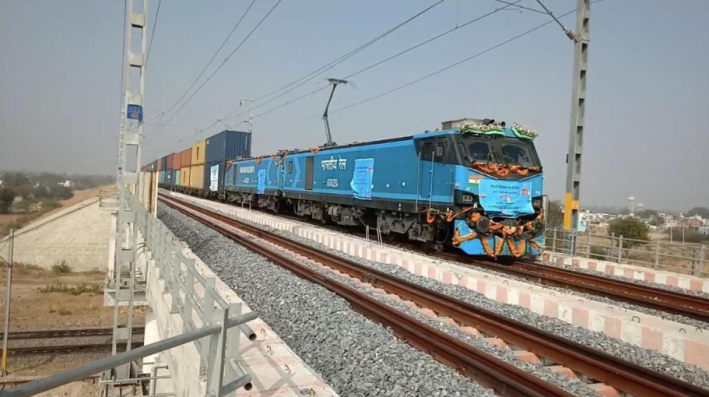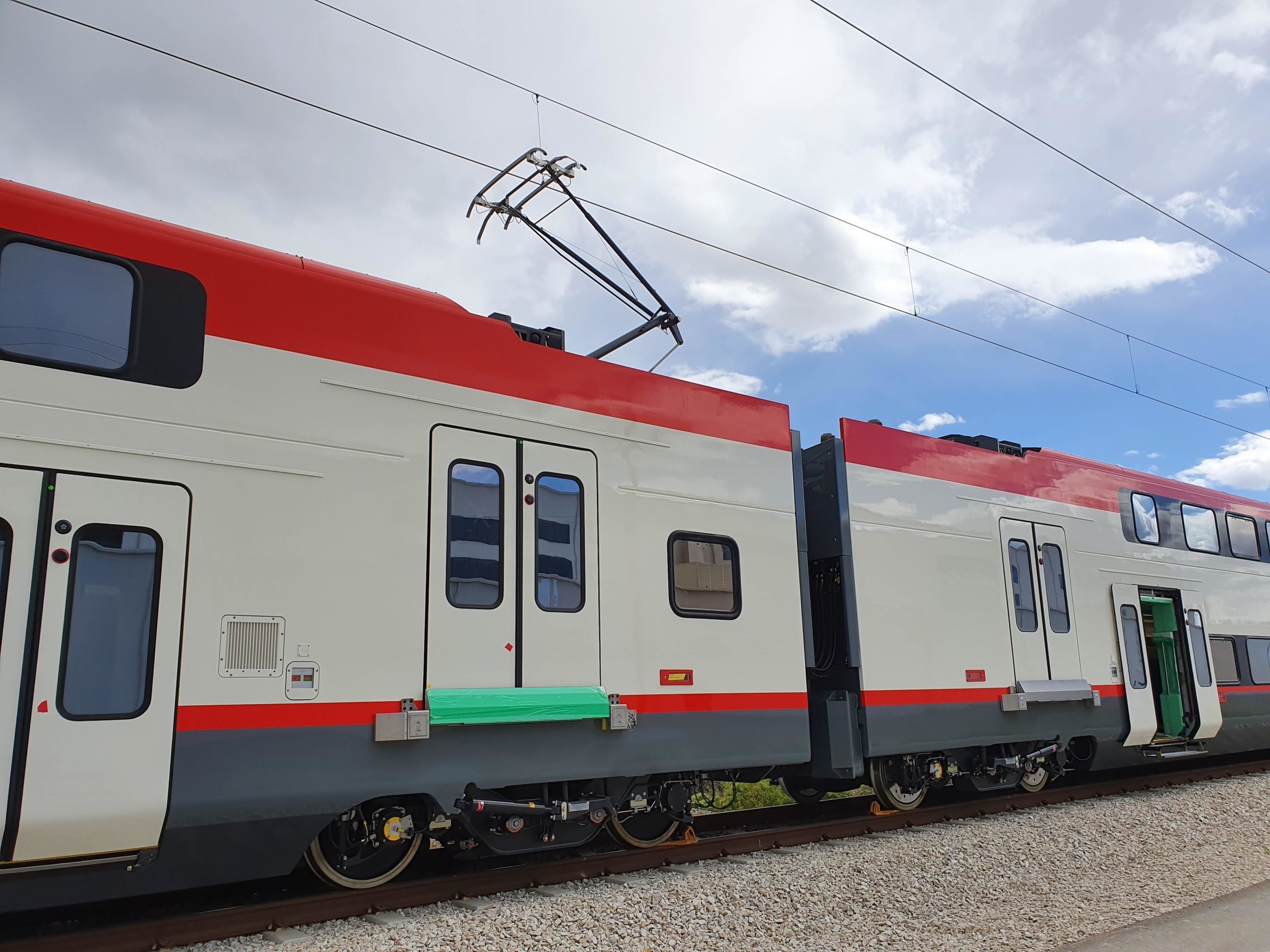In April, the California Air Resources Board passed a historic In-Use Locomotive Rule to regulate emissions from rail operations. Under the ruling, all locomotives built after 2035 operating in California will be required to be zero emission. However, the rule is agnostic as to what type of zero emission technology should be used. Two technologies are receiving consideration: electrification via overhead wires (catenary electrification) and hydrogen. Caltrain has pursued electrification, the global standard for zero-emissions rail, while Metrolink is exploring hydrogen trains, an experimental technology that has never been used in the United States.
Pursuing hydrogen over electrification will result in worse operations, higher costs, slower adoption, and higher emissions.

Catenary electric trains can provide substantial service improvements that could make rail competitive with cars, unlike hydrogen trains. Electric motors accelerate faster than combustion engines, including hydrogen. Catenary electric trains also have virtually unlimited range and require no dwell time for refueling, unlike hydrogen, which has a longer refueling time than diesel. Hydrogen has much lower energy density than diesel, so hydrogen-powered trains need to carry more volume or mass for a trip of the same length compared to catenary electric trains, which don't carry fuel.
This makes for lower passenger capacity (gotta store all that hydrogen!) and/or frequent refueling, which limits service frequency and range. The San Bernardino County Transportation Authority’s (SBCTA) planned battery-hydrogen ZEMUs have only half the capacity of the carriages towed by diesel locomotives that currently run on most of the Metrolink system. And according to SBCTA’s own hydrogen feasibility report, service from Redlands all the way to LA Union Station would require additional on-board hydrogen storage or more frequent refueling using infrastructure that’s not even in the planning stage. SBCTA’s hydrogen pilot, planned primarily for the light-rail Arrow line, cannot feasibly replace existing service on most of the Metrolink network, let alone offer improved service.
Because of its inherent physics, hydrogen is simply not suitable for high-speed, high-frequency, or high-capacity rail service, unlike overhead catenary electrification. Caltrain, which is set to begin entirely electric service on the majority of its route next year, has made it clear that electrification is key to growing ridership, stating that “electrified service will lay the foundation to meet the goal of tripling capacity by 2040, the equivalent of 5.5 lanes of U.S. Highway 101.” Planned improvements will enable electrified Caltrain to run at 110 mph.
In contrast, the Metrolink San Bernardino line, which has no realistic plan for zero-emission service, has a maximum speed of 80 mph and an average speed of 34 mph, with no improvements planned. Overhead wires are a must for speeds over 100 mph, like California high-speed rail or the planned Brightline high-speed rail to Las Vegas, both of which will need to share tracks with Metrolink in order to reach LA Union Station. Metrolink’s resistance to building out overhead wire infrastructure will hold these transformative projects back. While Caltrain is planning for a rapid transit future with overhead catenary, Metrolink/SBCTA’s commitment to hydrogen is an active obstacle to better rail transit in Southern California.
On top of these limitations, hydrogen is substantially less environmentally friendly than electrification due to impacts from its production. Catenary electrification and green hydrogen both use energy from the electrical grid to power trains, eliminating ozone emissions along the tracks. The grid is currently around fifty percent carbon-free, and is mandated to grow to ninety percent by 2035. The problem is that green hydrogen is produced through a multi-step process that involves converting water into hydrogen via electrolysis, using 2.5 times more energy than directly electrifying via overhead wires.
It’s also extremely water-intensive. For example, generating enough hydrogen to replace the diesel at one BNSF facility would require 12-20 million gallons of water per day, equivalent to five percent of LA's residential water usage. With climate change creating greater uncertainty over water supplies, electrolysis hydrogen is simply not a realistic replacement for fossil fuels in California’s passenger and freight rail fleets. And as it stands now, electrolysis is largely speculative, accounting for only two percent of the global hydrogen market, while 98 percent of the supply chain is derived from fossil fuels. Regardless of source, we can’t realistically count on having enough hydrogen to power a transportation network.
Because of its inherent efficiency and infrastructural simplicity compared to hydrogen, overhead electrification is much more cost-effective in the long run. The German state of Baden-Württemberg ruled out the use of hydrogen trains after finding them to have nearly twice the cost of overhead electrification over thirty years, for reasons that include both fuel and infrastructure costs. Hydrogen currently costs $28/kg where diesel costs around $5/gal. Unrealistic projections of bringing that number down to $2/kg assume low electric prices that would only make catenary electrification even more competitive.
Hydrogen embrittles steel, leaks easily, is highly flammable (think Hindenburg), and requires specialized and land-intensive infrastructure for refueling at multiple points along the train route, in contrast to catenary electrification which requires little infrastructure beyond the overhead wires. Electric trains also require less maintenance compared to diesel: they incur half the maintenance costs over the lifetime of the vehicle.
While hydrogen trains are in the experimental stage, electrification is the mature technology of choice for cutting-edge freight and passenger rail. More than two-thirds of the passenger and freight rail network in rail powerhouses like Italy, China, and Japan is electrified, while India, comparable in size to the US, has over 35,000 miles of electrified track. Contrary to industry claims, double-stack electric freight trains are common in countries with electric freight, while hydrogen trains with the power to haul heavy freight loads do not yet exist. In the United States, the Acela corridor, home to America’s fastest trains, is electrified, as are numerous heavy commuter rail lines such as New Jersey Transit. Overhead electrification is the proven technology for zero-emissions rail.
| Country | Miles Electrified | % Electrified | Date |
| Switzerland | 3302 | 100% | 2020 |
| India | 36522 | 90% | 2023 |
| Japan | 12752 | 75% | 2015 |
| Italy | 7566 | 72% | 2022 |
| China | 57256 | 70% | 2018 |
| France | 9742 | 54% | 2017 |
| Russia | 27200 | 51% | 2020 |
| UK | 3756 | 38% | 2020 |
| US | 805 | <1% | 2014 |
Why are agencies like Metrolink so skittish about overhead electrification? Despite the overall cost effectiveness of catenary, Caltrain’s electrification of 51 miles of track came at a steep price of $2.4 billion - a number that reflects California’s broken governance rather than anything fundamental about the technology. High-income countries like Israel, Denmark, and New Zealand have electrified their lines at costs of $2-4.5 million per mile, and simple governance reforms can bring upfront costs down to similar levels here.
One major contributor to high costs for Caltrain electrification was an over-reliance on consultants and lack of in-house expertise. To fix this, California needs a steady stream of electrification projects to sustain permanent in-house staff who can reliably deliver projects, the way Caltrans currently does for climate-changing highway projects. We need leadership at a statewide level to ensure funds (such as from California’s cap-and-trade program) are available for catenary projects and to develop staff capacity at state agencies.
Another way the state can step in to reduce costs for electrification is by streamlining the California Environmental Quality Act to reduce the paperwork burden for electrification projects. Environmental Impact Reports deemphasize the environmental impacts of inaction and give equal weight to subjective “visual impacts” and legitimate environmental harms. Frivolous lawsuits by affluent homeowners in Atherton misused CEQA to block and extort concessions from Caltrain, delaying electrification for nearly two years and forcing Caltrain to pay expensive lawyers to fight the claims. The CEQA lawsuit was not just expensive; it pushed the project’s eligibility for grant funding from the transit-supportive Obama administration to the hostile Trump administration, which withheld already-awarded grant money for over a year as a political ploy, adding further costs to the project. Projects that do not consume residential or natural land and allow for community input and equity analysis should not be required to shell out for consultants to write reports about the “visual impacts” of stringing wires above existing railroad tracks.

California leaders cannot continue giving equal weight to a proven technology that will improve rail service (catenary electric trains) and a wasteful experimental technology (hydrogen trains) that could lead to worse service and reliability than the status quo. They also cannot continue to ignore the most important CO2-reducing power of rail, which is reducing vehicle miles traveled. Freight rail interests have already filed a lawsuit challenging the In-Use Locomotive Rule, and continued hydrogen hype seems to lend credence to their arguments, which could see the rule overturned and zero-emissions rail set back for decades.
The state needs to show leadership to promote overhead electrification by building in-house expertise, funding the infrastructure, removing bureaucratic barriers to the implementation of this proven green technology, and by working with stakeholders to ensure that electric rail leaves the station.
Adriana Rizzo is a member of Californians for Electric Rail, a volunteer organization dedicated to bringing together environmental, transit, and labor organizations to advocate for rail electrification. She is based in Riverside, CA.






